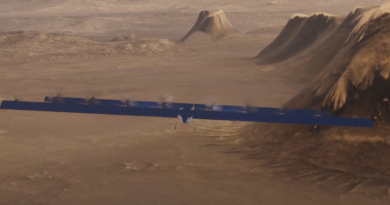Freaky asteroids flew by Earth, and NASA captured footage

A giant NASA radar in the remote Mojave Desert imaged some formidable asteroids — including a 1-mile-wide behemoth — as they passed through our planet’s neighborhood.
Fortunately, there are no known asteroids that might potentially hit Earth for over a century, and the likelihood of an impact from the biggest class of asteroids (like the one below) in the next thousand years is exceedingly low. Yet the imagery provides planetary scientists valuable information on what’s out there and how to prepare should a truly menacing space rock come our way.
“Pics or it didn’t happen!” NASA posted on X, formerly Twitter.
The first image below shows the mile-wide (1.5-kilometer) asteroid 2011 UL21 as it passed 4.1 million miles (6.6 million kilometers) away on June 27. It certainly didn’t graze Earth, but in space terms, that’s pretty close — 17 times the distance from the moon.
And it turns out this asteroid wasn’t alone. A smaller moonlet orbits it 1.9 miles (3 kilometers) away.
“It is thought that about two-thirds of asteroids of this size are binary systems, and their discovery is particularly important because we can use measurements of their relative positions to estimate their mutual orbits, masses, and densities, which provide key information about how they may have formed,” Lance Benner, a principal scientist at NASA’s Jet Propulsion Laboratory, said in a statement.

The next image reveals an impressively detailed view of the 500-foot-wide (150-meter-wide) asteroid 2024 MK, which zipped some 184,000 miles (295,000 kilometers) from Earth two days later, on June 29 (that’s closer than the moon, which is some 238,900 miles away). “This was an extraordinary opportunity to investigate the physical properties and obtain detailed images of a near-Earth asteroid,” Benner said.
“This was an extraordinary opportunity to investigate the physical properties and obtain detailed images of a near-Earth asteroid.”

A 500-foot-wide asteroid would pose a serious risk to Earthlings if it landed in a populated area. A considerably smaller rock, some 100 to 170 feet across, could create a blast big enough to destroy Kansas City. That’s why NASA is proactively preparing to deflect such a threat, whenever one might come our way.
All three asteroids were captured by NASA’s Goldstone Solar System Radar, a 230-foot-wide (70-meter) radio antenna near Barstow, California. NASA scientists beamed radio waves at the objects, and the reflected signals bounced back.
The risks of an asteroid impact
Here are today’s general risks from asteroids or comets both tiny and very large. Importantly, even relatively small rocks are still threatening, as the surprise 56-foot (17-meter) rock that exploded over Russia and blew out people’s windows in 2013 proved.
Every single day about 100 tons of dust and sand-sized particles fall through Earth’s atmosphere and promptly burn up.
Every year, on average, an “automobile-sized asteroid” plummets through our sky and explodes, explains NASA.
Impacts by objects around 460 feet (140 meters wide) in diameter occur every 10,000 to 20,000 years.
A “dinosaur-killing” impact from a rock perhaps a half-mile across or larger happens on 100-million-year timescales.


